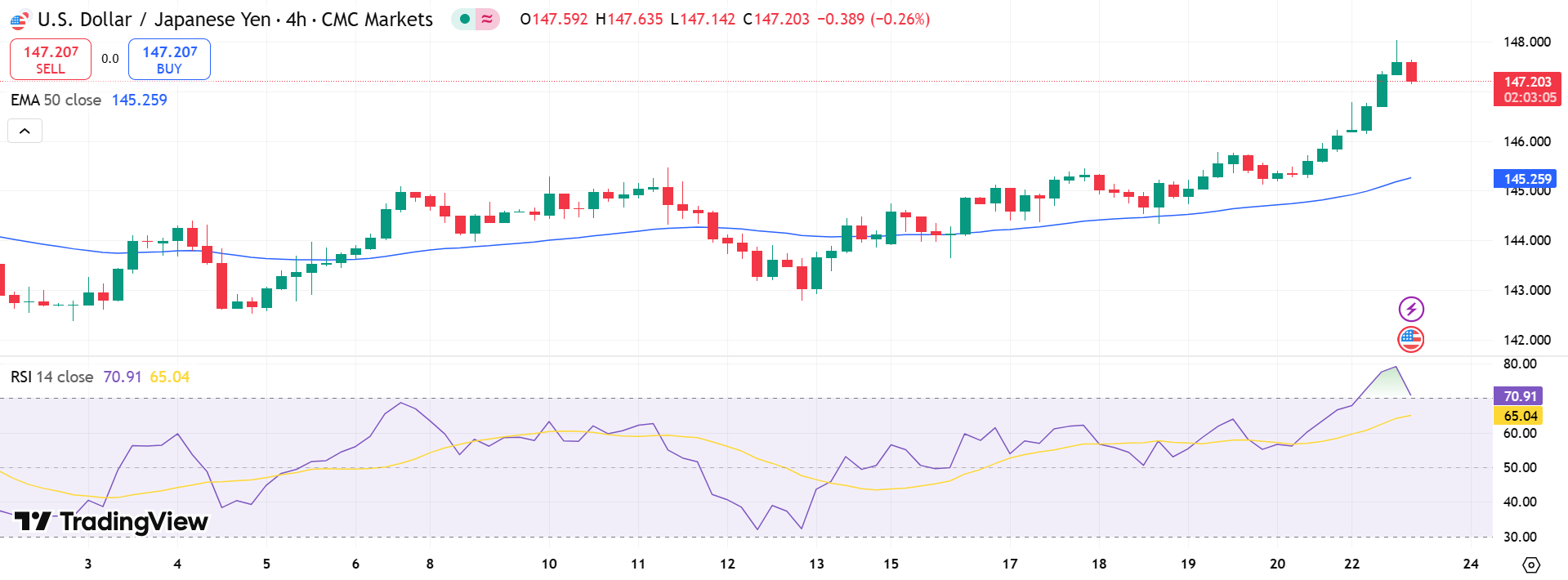The Japanese Yen extended its losses against the U.S. dollar for the third consecutive day on Monday, falling to its lowest level since May 14. The USD/JPY pair surged past the 147.00 mark, fueled by growing divergence in monetary policy expectations between the Bank of Japan (BoJ) and the U.S. Federal Reserve.
Investors are revising their outlook for BoJ rate hikes, now pushing forecasts into Q1 2026 following recent signals of caution. Last week, the BoJ decided to slow the reduction of its bond-buying program, reinforcing the perception that Japan remains committed to a highly accommodative stance amid domestic economic uncertainty.
Adding to the yen’s challenges, geopolitical concerns and the risk of U.S. trade tariffs further dampen sentiment. A 25% U.S. tariff on Japanese vehicles, along with 24% reciprocal duties, weigh heavily on Japan’s economic outlook, undermining support for the currency.
USD/JPY Eyes Key Technical Breakout
From a technical standpoint, the USD/JPY pair faces resistance at the 147.40–147.45 range, with a potential breakout opening the door to a move toward the 148.00–148.65 zone—its May swing high.
Should the pair fail to sustain momentum above 147.00, minor pullbacks could find support at:
- 146.00 – psychological level
- 145.30–145.25 – demand zone
- 145.00 – strong floor; a break may signal deeper downside
However, bulls appear in control as long as the price remains above the 100-day Simple Moving Average (SMA), around 146.80.
Domestic Data Strong, Yet Fails to Lift Yen
Japan’s macro data offered some bright spots. The au Jibun Manufacturing PMI climbed to 50.4 in June, signaling expansion for the first time since May 2024. Services PMI also rose to 51.5, pushing the Composite PMI to 51.4, its fastest pace since February.
Additionally, Japan’s core inflation hit a two-year high in May, staying above the BoJ’s 2% target for over three years. Yet despite these bullish indicators, the yen continues to struggle, overshadowed by dovish central bank signals.

Meanwhile, the U.S. dollar remains firm, underpinned by safe-haven demand amid Middle East tensions and lingering inflation fears tied to renewed Trump-era tariff policies.
Military Update:
- U.S. struck three Iranian nuclear sites on Sunday
- Operation included 75 precision-guided weapons, 25+ Tomahawks, and 125 aircraft
- Iran’s response and potential escalation remain key risk factors
Conclusion:
As policy divergence and geopolitical risk dominate the narrative, the Japanese Yen appears vulnerable. Unless the BoJ pivots more aggressively or geopolitical tensions ease, USD/JPY may continue to test higher levels above 147.


